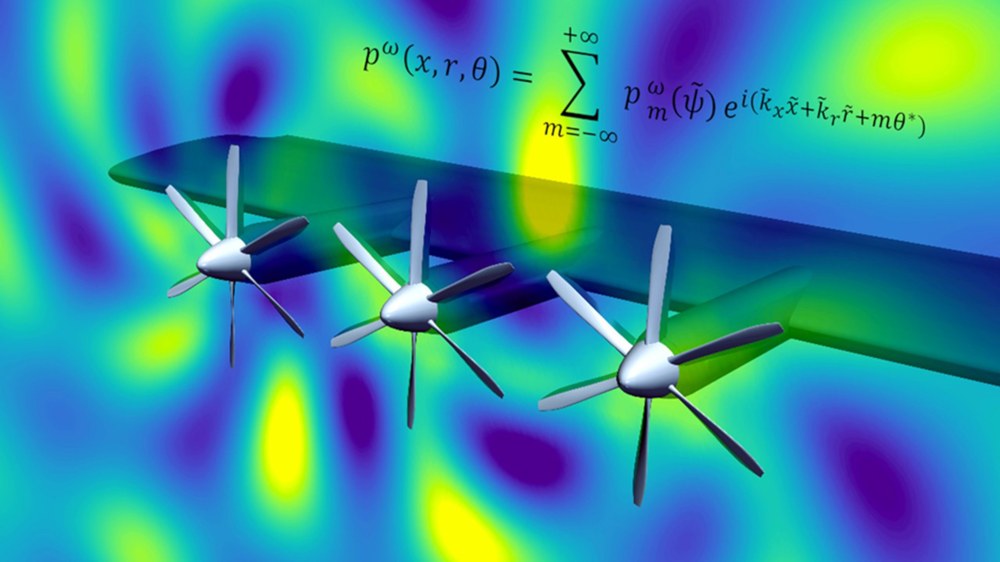PropNoise for quiet aviation

The PropNoise simulation tool predicts the noise of turbofan and open rotor engines. All sources and effects of noise generation can be fully described analytically with PropNoise. The tool offers the unique ability to quickly adapt to changing concepts in aviation.
Versatile tool at the cutting edge of aviation research
Propulsion Noise - PropNoise for short - has been developed since 2008 by a team of researchers from the Department of Engine Acoustics at the DLR Institute of Propulsion Technology. The aim is to analyse the effects and trends in engine noise resulting from changes in basic engine design parameters such as engine size, bypass ratio or number of blades. The tool, written in C++, uses fast and flexible analytical models and can be used either as a stand-alone programme or coupled to an external flow solver. Researchers and engineers use it to evaluate the noise characteristics of an aircraft engine in the preliminary design phase with moderate effort. It is also an indispensable tool for the early evaluation of the noise characteristics of future engines.
PropNoise supports conventional transonic engines, low speed fans and can be used to analyse innovative concepts such as distributed electric propulsion. It can be coupled with a flyover tool (VIOLIN) and an auralisation tool (CORAL) to simulate the radiated noise during a flyover. This will contribute to a better understanding of the psychoacoustic effects of design changes and multi-rotor arrangements in the future.
An outstanding feature of PropNoise is that all sources and effects of noise generation are fully described analytically. This provides the unique ability to continuously adapt to changing aircraft concepts. Examples include the study of boundary layer ingestion for flying wing concepts, the acoustic influence of variable nozzles and adjustable fan blades for next generation UHBR engines, and the integration of distributed propulsion for electrified aircraft.
